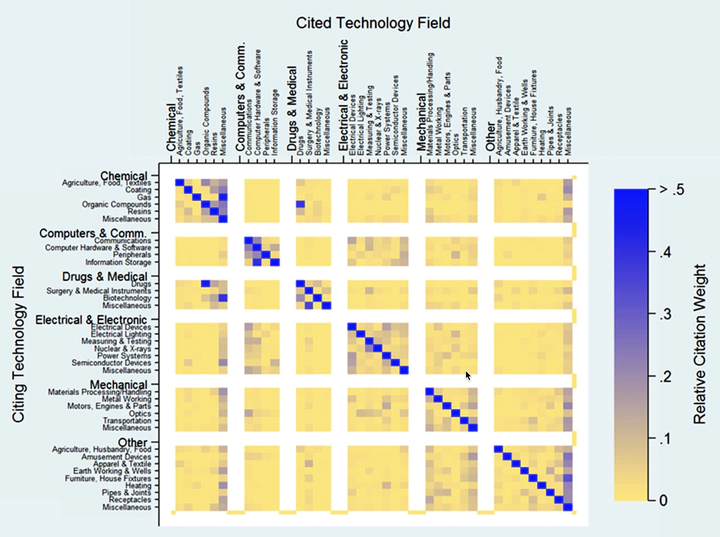 Title Page: Proceedings of the National Academy of Sciences
Title Page: Proceedings of the National Academy of SciencesAbstract
Technological progress builds upon itself, with the expansion of invention in one domain propelling future work in linked fields. Our analysis uses 1.8 million US patents and their citation properties to map the innovation network and its strength. Past innovation network structures are calculated using citation patterns across technology classes during 1975–1994. The interaction of this preexisting network structure with patent growth in upstream technology fields has strong predictive power on future innovation after 1995. This pattern is consistent with the idea that when there is more past upstream innovation for a particular technology class to build on, then that technology class innovates more.
Technological progress builds upon itself, with the expansion of invention in one domain propelling future work in linked fields. Our analysis uses 1.8 million US patents and their citation properties to map the innovation network and its strength. Past innovation network structures are calculated using citation patterns across technology classes during 1975–1994. The interaction of this preexisting network structure with patent growth in upstream technology fields has strong predictive power on future innovation after 1995. This pattern is consistent with the idea that when there is more past upstream innovation for a particular technology class to build on, then that technology class innovates more.
Citation: Acemoglu, D., Akcigit, U., & Kerr, W. R. (2016). Innovation network. Proceedings of the National Academy of Sciences, 113(41), 11483–11488. https://doi.org/10.1073/pnas.1613559113